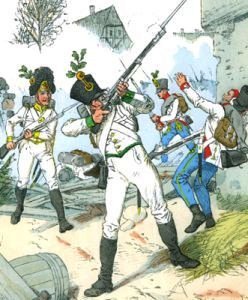
Austrian infantry.
From left to right: grenadier, 'German' fusilier,
two 'Hungarian' fusiliers
|

Grenadiers - Elite Assault Infantry
"The first Austrian grenadiers came into being in 1700, at the height of the European vogue for grenade-throwing heavyweight infantry. The fashion passed soon enough, for the grenades were cumbersome, triccky to ignite, and ... only marginally less perilous to the thrower than to the target. However the grenadiers themselves survived in virtue of being elite troops in their own right, and they were marked out by their stature, their swarthy complexions, their bristling moustaches, their arrogant demeanour, their grenadier marches (characterised by alternate passages on the rim and the skin of the drum), and their grenadier caps ..." (Duffy - "Instrument of War" Vol I p 234) Grenadiers were the elite of line infantry. They were distinguished by stature and large mustache. The requirements for candidates on grenadiers were: valor and marksmanship, at least 5 years' service and one campaign. They were taller than the rest of infantry (by the way, the minimum height for Austrian infantryman was 165 cm, and Archduke Charles was only 153 cm tall). Soldiers of the 3rd rank had the greatest chance to become grenadiers - they were used as skirmishers and therefore frequently mastered their schooting skills and hardened their morale. They were also the most physically fit.
Reputation
Organization
In 1813 were:
Below is a list of grenadier battalions in 1809 with battalion commander's name, and regiments that
contibuted to the make up of each battalion: |
|

Jägers - Light Infantry
"The rise of light infantry formed one of the most significant developments in European warfare in the second half of the 18th century." (Duffy - "Instrument of War" Vol I p 240) The Austrians formed battalions of jagers. General Daun believed that the battalion was the ideal size for a unit of those men, for companies were too small to be kept going for any length of time, while full regiments were nedlessly expensive. General de Ligne wrote: "You should not tell a recruit: 'I will make you into a jager !' You must instead take them from the forests. They know how to perch on a rock, how to conceal themselves in one of those fissures which open in the ground after a great drought, or hide behind a mighty oak. They make their way slowly and softly, so as not to make any sound, and in a such a way they can creep up on a post and take it by surprise, or shoot down the enemy generals."
The light troops used terrain, trees and houses as a cover. In 1809 at Wagram entire
jäger battalion took cover in a drainage ditch 100 paces in front of the village.
When the French columns marched toward this village the jägers rose up and delivered
a volley at close range. In 1813 at Dresden the Austrians used skirmishers in an
interesting way; the 'Erzherzog' Rainier Infantry Regiment sent skirmishers forward
and between flankers (horse skirmishers) drawn from a hussar regiment.
Organization and Strength
Skirmishers
Commanders of jager battalions.
Ob. - Oberst (Colonel) Ob.-Ltn. - Oberst-Lieutenant (Lieutenant-Colonel) Mjr. - Major
|
|

Grenzers - Border Infantry.
Organization
(In 1802 the soldiers of Grenz regiments from the regions around Glina and Petrina were mix of Orthodox and Catholics. The regiments from Lika and Petrovaradin were Orthodox, while the regiments from Varazdin, Slavonski Brod and Gradiska were made of Catholics.)
Quality of Grenzers
Below are two battles (of several) where the Grenzers deserved greater respect from the French:
|

Organization of Ausstrian Infantry. "Hasty reforms were pushed through in 1805, so soon before the army embarked on campaign that they caused only confusion (Archduke Charles realised the danger, and apparently never applied the new regulations for his own forces). The main change was for each infantry regiment to be arranged in one grenadier and four fusilier battalions, each battalion being of four companies of a nominal 160 men each. In the words of one officer, all this achieved was that 'common soldiers no longer knew their officers and the officers did not know their men'. The 1807 regulations, supervised by the Archduke Charles, returned to the previous organisation (three battalions and two grenadier companies per regiment, field battalions of six companies and garrison battalions of four), wartime establishment now being the same as peacetime save for the augmentation of the third battalion to six companies and the detachment of the grenadiers to composite battalions ..." (John Stallaert)
Infantry regiment had three field and one depot battalion.
Austrian battalion was probably the biggest battalion in Europe. It consisted of approx.
1.200 men, while the French battalion was only 840 men strong.
After 1808 each Austrian battalion carried 1 flag.
. . . . . . . . . . . . . . . . . . . . . . . . . . . . . . . . . . . . . . . . . . . . . . . . . . . . . . . . . . . . 3 Senior Officers: Inhaber, Oberst (colonel) and Oberstleutenant . . . . . . . . . . . . . . . . . . . . . . . . . . . . . . . . . . . . . 2 Majors . . . . . . . . . . . . . . . . . . . . . . . . . . . . . . . . . . . . . 1 Regimental adjutant . . . . . . . . . . . . . . . . . . . . . . . . . . . . . . . . . . . . . 6 'Kaiserliche Kadetten' (Officers' sons selected by Hofkriegsrat. . . . . . . . . . . . . . . . . . . . . . . . . . . . . . . . . . . . . . The more competent were appointed as NCOs in companies.) . . . . . . . . . . . . . . . . . . . . . . . . . . . . . . . . . . . . . 9 Fouriers . . . . . . . . . . . . . . . . . . . . . . . . . . . . . . . . . . . . . 1 Drum-major . . . . . . . . . . . . . . . . . . . . . . . . . . . . . . . . . . . . . Non-Comb.: provost, chaplain, auditor, accountant, surgeons, musicians . . . . . . . . . . . . . . . Grenadier Company . . . . . . . Grenadier Company (In wartime the grenadier companies were detached from parent regiments.)
. . . . . . . . . . . . . . . . . . . I Leib Battalion
. . . . . . . . . . . . . . . . . . . II Oberst Battalion
. . . . . . . . . . . . . . . III Oberstleutenant or Depot Battalion
.
.
. . . . 3 Officers: Hauptmann, Oberleutnant, Unterleutnant . . . . 1 Ensign {Fahnrich} . . . . 2 Senior NCOs {'Prima Plana'}: sergeant-major {Feldwebel} and fourier {Fourierschutzen} . . . . 6 (4 in peacetime) Sergeants {Korporalen} . . . . 12 (8 in peacetime) Corporals {Gerfreiter} According to Dienst Reglement (fur die kaiserliche konigliche Infanterie, Wien 1807) there were 12 corporals (6 in peacetime) in fusilier and Grenzer company, 13 (6) in grenadier company, 12 (8) unter-jagers in jager company. . . . . 7 Vize-Korporals (in wartime they took up the rank of 'Korporalen') . . . . 1 Sapper {Zimmermann} . . . . 2 Drummers . . . . 150-200 privates. 'German' fusilier company had 180 men while 'Hungarian' company 200. 'German' grenadier company had 120 men while 'Hungarian 150-160 men. If the 'Inhaber' wished there were also accepted several educated sons of nobles. These young men served as "private cadets' (Ordinaire Kadet) and served along the rank and file. If they served their time and showed skill they were appointed as NCOs.
Deployment of Company (4 'Zugs') with shown positions of NCOs and officers.
In 1809 the jäger company in peacetime consisted of : In 1807 the Grenzer company was 200-men strong unit.
. . . . . . . . . . . . . . . . . . . . . . . . . . . . . . . . . . . . . . . . . . . . . . . . . . . . . . . . . . . . Sharpshooters (256 men) The Karlstadt and Banal regiments had additionally 200 Seressaner scouts. . . . . . . . . . . . . . . . . . . . I Field Battalion . . . . . . . . . . . Sometimes were attached 2 light guns (3pdrs) . . . . . . . . . Grenz Company . . . . . . . . . . . . . . . . Grenz Company . . . . . . . . . Grenz Company . . . . . . . . . . . . . . . . Grenz Company . . . . . . . . . Grenz Company . . . . . . . . . . . . . . . . Grenz Company . . . . . . . . . . . . . . . . . . . II Field Battalion . . . . . . . . . . . Sometimes were attached 2 light guns (3pdrs) . . . . . . . . . Grenz Company . . . . . . . . . . . . . . . . Grenz Company . . . . . . . . . Grenz Company . . . . . . . . . . . . . . . . Grenz Company . . . . . . . . . Grenz Company . . . . . . . . . . . . . . . . Grenz Company . . . . . . . . . . . . . . . III Field or Depot or Reserve Battalion When regiment left for campaign there remained only a reserve of 400 men unsuited for field service. Some battalions however were stronger. I am not sure how many companies it had, 2, 4 or the regular 6. . . . . . . . . . Grenz Company . . . . . . . . . . . . . . . . Grenz Company . . . . . . . . . Grenz Company . . . . . . . . . . . . . . . . Grenz Company
|
|

Weapons.
Each soldier of 'German' and Grenzer regiment carried a musket (+ 60 rounds of ammunition),
triangular bayonet and "Fusilier saber" (43-cm long blade).
Firearms of Austrian infantry : Aiming was unusually restricted to pointing the musket in the general direction of the enemy, at which time the trigger was depressed, sending the hammer crashing forwards so that the flint struck sparks upon the 'frizzen'; as the 'frizzen' was forced back on its hinge, the priming-pan was uncovered and the sparks fell on the powder, which burst into flame. The spark was communicated via the touch-hole to the powder in the barrel, which exploded with a loud report, a cloudof thick smoke and a vicious recoil as the ball was fired from the end of the muzzle. The musket was then lowered and the whole process begun anew. "All muskets were muzzle-loading, requiring the charge to be inserted via the muzzle; breech-loading weapons existed only in very small numbers, virtually the only one to see service being the Austrian 'Crespi', equipped with a somewhat bizarre spear-ended bayonet, but again its use was very limited." (John Stallaert, Canada) B. Girandoni introduced Repetierwindbusche M 1780 a repeating air rifle with 20-shot magazine ! This weapon was used by Jägers until 1797-1800 and then withdrawn due to technical problems.
Until 1808 the sharpshooters in Grenzer regiments were armed with rifles and with the
unusually short double-barrelled over-and-under weapon. It was heavier weapon than musket and
was carried in a large bag. In that year it was replaced by new pattern rifle and carbine.
|
|

Tactics of Austrian Infantry. According to John Stallaert "... the Austrian army retained faith in 18th century constricted manoeuvre at the expense of the less formalised movements employed by the French, the Austrian regulations until 1807 being based upon the 1769 system. Light infantry tactics remained largely the preserve of the Frei-Corps and Grenzers, and in some cases were actually discouraged in the regular army. Despite the later claim that by 1798 the Austrian army was able to fight in open order (as actually attempted at Novi in November 1799, resulting in defeat), in April 1800 Melas's chief of staff Baron Zach expressed the general reliance on old-fashioned, close and linear formations, an advance 'courageously in closed formation, with bands playing, and keeping their formation' being, in his opinion, a guarantee of success. 'Unnecessary skirmishing can only be detrimental ... a determined charge delivered in close order ... will certainly result in victory with very few casualties'." One eyewitness described how the Austrian line infantry made village a strongpoint: "The Austrians had blocked all the entrances to the village [of Seifertshain]; all the trees in the surrounding fields had been cut down and used as barricades. The streets were blocked with carts, ploughs and other implements. A gun had been set up in the gate of the vicarage and 4 other guns had been placed by the inn at the bridge." (Digby_Smith - "1813: Leipzig" p 126) The Austrian infantry used the following formations: lines, columns, masses and skirmish chain.
Lines, Columns and Masses.
Skirmishers
The skirmishers were tightly controlled by officers
and NCOs and operated with 6 paces intervals and as said above 300 paces of their parent
battalion. It was estimated that 60-80 skirmishers were sufficient to support a battalion.
The light troops used terrain, trees and houses as a cover. In 1809 at Wagram entire jäger battalion took cover in a drainage ditch 100 paces in front of the village. When the French columns marched toward this village the jägers rose up and delivered a volley at close range. In 1813 at Dresden the Austrians used skirmishers in an interesting way; the Erzherzog Rainier Infantry Regiment sent skirmishers forward and between flankers (horse skirmishers) drawn from a hussar regiment ! The Austrians formed advance guards made of light troops. The French had good opinion about these troops, General Duhesme wrote: "These advanced guards, well handled, only disputed their ground long enough to make us waste time and men. They brought us from one position to another till they reached that which they really meant to defend. There they let us use up and scatter our last battalions whose ardour generally shattered itself against their intrenchments. Then fresh troops issued from them in the most perfect order; they, in their turn, threw out skirmishers upon our flanks, and thus they charged at advantage troops dispersed and fatigued, corps in disorder and unable to rally most of their men."
According to John Cook "It is clear that the Austrian line regiments were perfectly capable of skirmishing, and did so throughout the period. Most first hand accounts either do not mention the source of the skirmishers but a significant number specifically mention the third rank, or sometimes entire sub-units. There are certainly far more general references to line regiments deploying skirmishers than those which specify where they were drawn from, but in the absence of specificity one simply has to assume that they were drawn from the third rank, in accordance with the Exercier-Reglement 1807.
In summary, the trends seen in the Austrian service are similar to those seen elsewhere. "
|
|

Uniforms of Infantry.
Jäger's Uniform
Grenzer's Uniform
Line Infantry's Uniforms
|
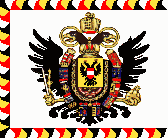
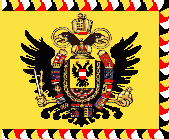
 On picture: photo of Austrian fusilier wearing the early helmet instead of shako.
He is armed with musket and bayonet, and wears helmet instead of shako.
On picture: photo of Austrian fusilier wearing the early helmet instead of shako.
He is armed with musket and bayonet, and wears helmet instead of shako.
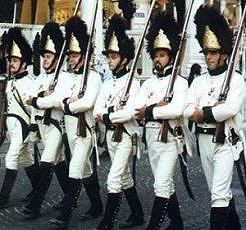 On picture: Austrian grenadiers, reenactment.
On picture: Austrian grenadiers, reenactment.
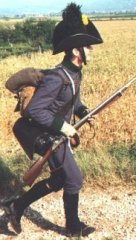 On picture: Austrian jager, reenactment. Photo from
http://fp2k.redshift.com/memirr/index.htm. Unfortunatelly we don't know the author of this photo.
On picture: Austrian jager, reenactment. Photo from
http://fp2k.redshift.com/memirr/index.htm. Unfortunatelly we don't know the author of this photo.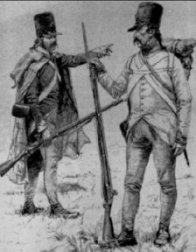 "Far from being passive conscript hordes, the Grenzer had a lively sense of their dignity and what
was due to them, and in this respect they may be compared with the yeoman archers of late medieval England."
(Duffy - "Instrument of War" Vol I, p 304)
"Far from being passive conscript hordes, the Grenzer had a lively sense of their dignity and what
was due to them, and in this respect they may be compared with the yeoman archers of late medieval England."
(Duffy - "Instrument of War" Vol I, p 304)
 The Austrian infantrymen wore one of the simplest uniforms in Europe.
They were however well made and elegant. The Austrian and British coats were one of the best targets for enemy marksmen as white and red are the most visible colors from the distance.
The Austrian infantrymen wore one of the simplest uniforms in Europe.
They were however well made and elegant. The Austrian and British coats were one of the best targets for enemy marksmen as white and red are the most visible colors from the distance.